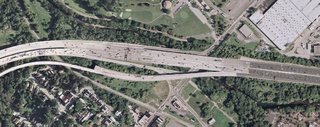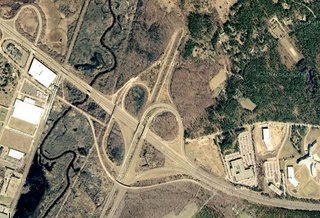Miles of Rope

There's something wonderful about being alone on the shore of the Potomac at six A.M. Just me and the Mount Vernon guard dog, a skittish border collie, watching the mist rise off the river and thinking about the day's work, your tools about to dig into earth that George Washington once owned and worked. Then the rest of the crew arrives, along with the micromanaging production designer, and all romantic thoughts disappear.
We're rebuilding George Washington's camp at Valley Forge, and recreating a field hospital out of barns and outbuildings. Up the road they're filming scenes of the French and Indian wars, including the untimely death of General Braddock. We're pitching tents, digging fire pits, erecting flagpoles, and stretching tarps across handmade wooden poles. We're strictly forbidden from using any kind of permanent fasteners on the Mt Vernon buildings, so we're using rope to build just about everything. Our micromanaging production designer insists on going on every product run personally, usually coming back with a single 150' package of manilla rope -- which we use in about ten minutes. Eventually he figures out that it's cheaper to buy LOTS of rope and risk spending an extra $10 on materials than to pay six guys union scale to wait around for him to return.
Oh, the project -- we're making an 18 minute film, "George Washington: Man of Decision," which will run at the new Mt Vernon visitor's center... some day. It's rewarding to think that long after my other films (Wedding Crashers, Syriana, etc) are largely forgotten and are but Deep Tracks in Netflix's rotation, this little production will be run several times a day for bored, field-tripping youngsters.
It rains. It's hot one day, cold the next. It's perhaps as hard as I've ever physically worked on a set, and I'm utterly filthy at the end of each day. My knee aches because someone (well, let's be upfront: The production designer!) is apparently unable to drive, and sends me flying off the back of a pickup truck when he slams on the brakes for absolutely no discernable reason. But the work feels good, and the place looks fantastic. In a couple days, the shooting crew will be here, and there will be the mad dash of last-minute set dressing and Splashing of Fake Blood.
But for now, the nameless Border Collie and I are enjoying a few peaceful minutes on the banks of the Potomac; I'm thinking about who was standing on this spot 230 years ago, and he's thinking how good my bacon-egg-chese sandwich smells.







